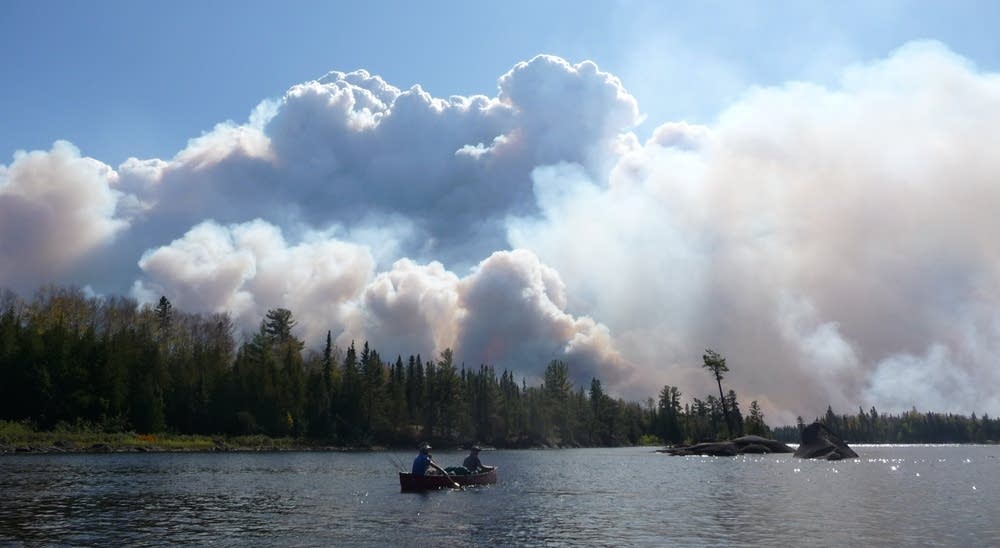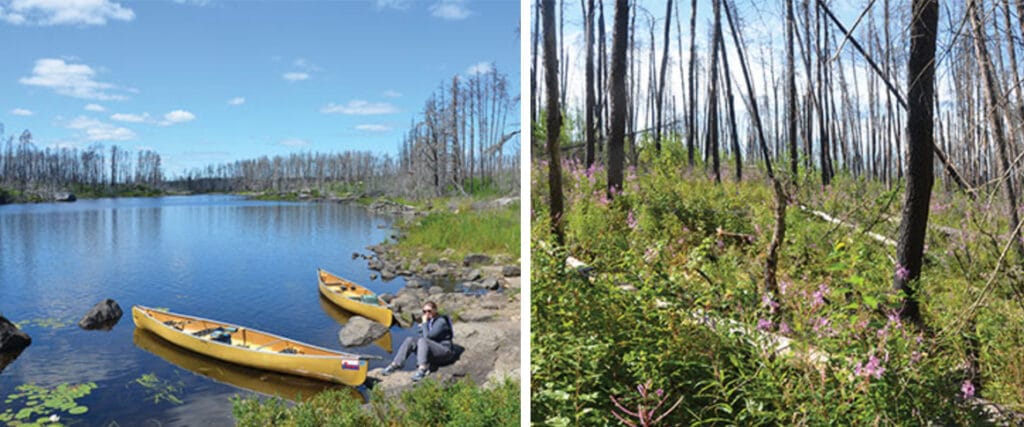
There are thousands, if not millions, of young jackpine growing in areas that were burned by the largest wildfire in Minnesota history, five years ago this week. That is what one writer found this month, as he toured areas hit hard by the inferno.
The Pagami Creek Fire burned about 93,000 acres of forest, most of it in the Boundary Waters Canoe Area Wilderness, in late August and September 2011. Outdoor News editor Rob Drieslein was there when the fire was sparked, and recently returned with his family to see what had changed:
“Last week, I’d intended to push through the fire zone and move into the northern half of Insula Lake, which marked the border of the fire. I’d declared to my wife that I wasn’t interested in staring at a fire-scarred landscape for four days.
Alas, wilderness camping with young children demands flexibility. After about four hours of paddling, they’d had enough on our entry day, and we found a suitable spot on the east side of Lake Four.
After nursing a sore back and fishing for a couple days, we toured the area via day trip, including a loop through Fire Lake then back west after dropping into Hudson. The northern portion gave us ridiculous solitude and classic views of unburned canoe country. The latter, southern portion revealed an area that must’ve resembled a moonscape immediately after the Pagami Creek Fire. Farther west, the fire had skipped around a bit and patches of green jack pine remained, but heading toward Insula, it burned incredibly hot and torched everything.
That was five years ago, however, and today tens of thousands…maybe millions – of little four- and five-foot jackpines dominate the landscape. Wildflowers, too. We intend to explore other areas of the BWCAW in upcoming years, but a return to the fire zone will be fascinating in about a decade when those jackpines have serious growth under their rings.”
Day tripping north from Lake Four to Fire Lake, and then back down to Hudson, Drieslein discovered lands that were untouched by the flames, and areas that had been scorched. All over the burned areas, there were young trees and wildflowers growing and blooming. Aside from the fire, Drieslein reported good fishing for smallmouth bass, tolerable mosquitoes, no moose, and a dearth of young people in the wilderness. Read the full article here.


